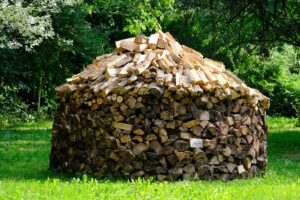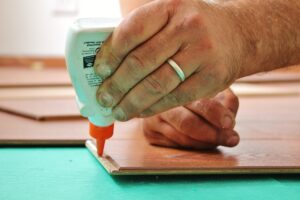The dimensional stability of wood is a property that is frequently targeted for improvement through various wood modification processes. Dimensional changes in wood can be caused by contact with liquid water or by humidity cycling over long or short periods.
Most tests for dimensional stability compare samples to an unmodified reference, but this can be difficult when testing commercially available wood modifications. In these cases, a direction-based measurement (such as radial or tangential swelling) makes more sense.
Moisture
Moisture is one of the most important factors in the dimensional stability of wood. Wood products should be acclimated or dried to the correct moisture content for their intended use before installation. This will reduce drying defects and minimize moisture movement. It will also help to ensure that the wood is stable in service by avoiding excess swelling and shrinkage, as well as reducing the incidence of damage due to excessive movement. However, acclimating and drying wood is difficult and expensive, and it is common for wood products to have varying levels of moisture content at different times after manufacture.
This makes it difficult to compare the performance of different woods in terms of dimensional stability. Many test methods for evaluating dimensional stability are only capable of measuring the dimensional changes of wood after it has been exposed to pressure resaturation or oven dryness. These measurements are not necessarily representative of the conditions that wood will experience in service, which is why there is such a great need for new tests to accurately measure dimensional stability.
Humidity-cycling tests provide a more accurate representation of dimensional stability because they are designed to measure the transient behavior of wood under humid conditions. They take much longer to complete than water-soaking tests but are more useful for assessing the dimensional stability of modified wood because they can be compared with unmodified wood. However, the humidity-cycling test has several limitations that need to be addressed.
For example, the ASE values calculated from the results of humidity-cycling tests can vary significantly depending on the variation in grain direction of the tested samples. This is a major issue because in service it will be very uncommon for the changes in dimension to occur in only one direction. Furthermore, the ASE of a particular species can vary considerably with time after soaking in water because it is affected by sorption hysteresis.
It is possible to mitigate the effects of these difficulties on ASE by measuring the dimensional changes of the specimens in several cycles of humidity cycling, rather than just the first. This approach will enable the ASE of modified woods to be compared more reliably with the ASE of unmodified woods.
Humidity
As the moisture content of wood changes, the dimensional stability changes. This is why most tests of dimensional stability equilibrate the wood in conditions that mimic its expected moisture content, either by pressure resaturation or oven drying. However, this is not always possible in real-world applications. The choice of the equilibration condition can be a trade-off between managing testing duration and complexity, and obtaining results that are relevant to actual in-service performance. For example, a repeated water soak test may not provide the best characterization of the long-term behavior of wood under humid air, while equilibrium humidity cycling is more realistic but may require a significant amount of time and resources to conduct.
Many measures of dimensional stability consider the moisture state of the sample when making comparisons between different types of wood. For example, some ASE calculations compare the change in radial and tangential dimensions of a sample per 1% increase in relative humidity. This measure is a useful benchmark for unmodified and modified wood but is difficult to relate to the conditions that will be encountered in service.
Another metric that captures differences in the rate of dimensional change is the swelling anisotropy ratio, which is the tangential swelling coefficient divided by the radial swelling coefficient. A high swelling anisotropy ratio indicates that a modification has reduced the ability of the wood to absorb water in the tangential direction.
This study compared three wood modifications for their effects on dimensional stability under humid air conditions using the swelling anisotropy ratio and an equilibrium humidity cycling test. Each of the three modifications improves dimensional stability differently: Furfurylation impregnates furfural alcohol polymer into the cell wall to bulk the cell and retains it in a swollen state; thermal modification degrades hemicelluloses, removing OH groups and reducing hygroscopicity; and acetylation replaces OH groups with acetyl groups that can swell the cell walls. The resulting data shows that all of the tested materials improved dimensional stability, but that the FA treatment had the greatest improvement.
The tangential swelling ratio of the AC samples was significantly lower than that of the TH and FA samples, indicating a reduction in the ability of the wood to absorb water in its tangential direction. This result was not apparent in the radial swelling ratios, which were similar between all of the tested wood types.
Temperature
Dimensional stability is a property that affects the performance of wood in service. It can be measured using a variety of tests, which vary in their scope and sensitivity. The tests need to be repeatable and standardized, allowing results from different laboratories and periods to be compared. They must also indicate how the wood will behave in the long term. In addition, the test must be capable of predicting the behavior of wood when exposed to long and short-duration changes in humidity.
Several studies have evaluated the dimensional stability of wood using tests such as anti-shrink efficiency (ASE) and equilibrium humidity cycling tests. The ASE test measures the change in tangential dimensions after 30 minutes of soaking water. The results are compared to the oven-dried values of the samples. The AC samples had the highest ASE, indicating improved dimensional stability, followed by the Furfuryl Alcohol Formulation and ThermoWood treatments.
Both the ASE and EMC tests are useful in assessing the performance of modified wood. However, the ASE results are not always comparable across different studies due to differences in the test method used. It is important to use the most accurate and repeatable measurement instrument available to minimize measurement error. For example, a bench-mounted gauge is more accurate than a hand-held caliper. In addition, it is important to mark the dimensional measurement points on each sample, which will allow each specimen to be measured in the same position and reduce the risk of transcription errors.
The EMC tests are designed to measure the capacity of wood to resist moisture loss, but they can be affected by temperature, humidity, and grain direction. To get the most reliable results, it is recommended that the tests are conducted on free-from defects, preferably with growth rings parallel to one edge of the specimen. Moreover, the tests should be conducted in an environment that is as close to neutral as possible.
Heat treatment increases the dimensional stability of wood by preventing shrinkage and reducing the amount of moisture lost. It can be achieved through vacuum heat treatment or by using shield media such as nitrogen gas, steam, and vegetable oils. Nitrogen gas is the most common shield medium, but it has been shown that carbonization and oxidation can reduce the mechanical properties and dimensional stability of heat-treated wood.
Modifications
Wood modification processes often aim to enhance the dimensional stability of the final wood product. However, the measurement of dimensional changes in modified and unmodified woods is complicated by the fact that many different methods are used to evaluate dimensional stability with little agreement on the ideal test method or metric for comparisons between samples. Ideally, tests should be able to capture changes in dimensions that occur over long periods and should also allow for the evaluation of changes in direction, e.g., tangential or radial swelling, in addition to overall change in volume.
It is also important that any measurements made reflect the behavior of the wood under service conditions, rather than only a limited range of environmental conditions. To this end, it would be useful to develop a test that evaluates the tangential and radial dimensions of wood under service conditions (i.e., a water-soaking test that includes wetting and drying cycles) to identify possible differences in in-service performance.
The water-soaking test is commonly used to compare the dimensional stability of wood, but its reliance on a specified moisture content in the equilibration process makes it difficult to evaluate differences in performance under a wide range of conditions. For example, most tests use a standard moisture level of 12% MC and describe dimensional changes in terms of this value. In a typical service situation, however, wood is often wetted for a shorter period (e.g., for a day or two in rainy weather) and may be at very different levels of moisture content – below the fiber saturation point (FSP) or above it.
Moreover, the water-soaking test results in a relatively large difference between the tangential and radial dimension changes, even when the samples have been equilibrated to a similar moisture state. This indicates that the test does not adequately distinguish between different types of sorption behavior. Ishimaru et al. compared the dimensions of samples dried after equilibrating to a high humidity with those of samples dried from full water saturation and found that the former showed greater dimensional changes, suggesting that differences in sorption behavior are not always captured by this type of testing.






